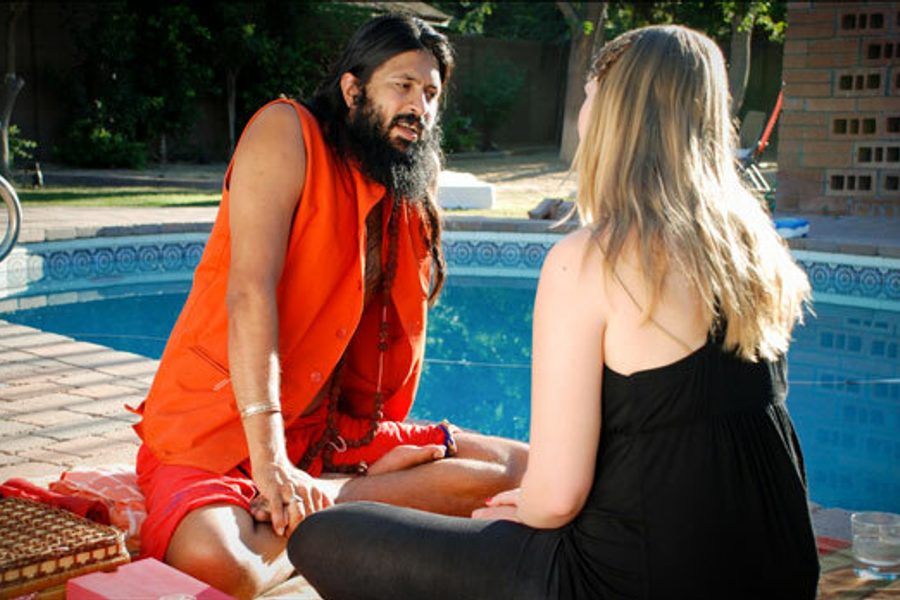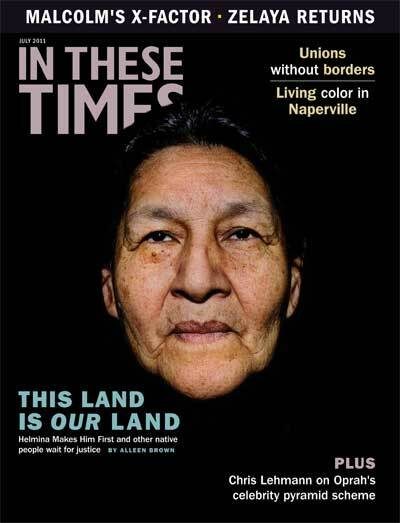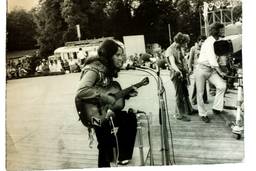Atrocities Beyond Our Gates
City of Life and Death details the Rape of Nanking—and reminds us of the 20th century’s widespread horrors.
Michael Atkinson

Lu Chuan’s City of Life and Death, a big-budget Chinese movie, doesn’t pander to colorful ideas of Orientalist splendor or stoop to kung-fu. The film opens up its corridor of horrors in breathtaking, silvery black-and-white, doing something cinema does best: confronting us with a past the world has tried to forget. The metropolis of the title is Nanking, and Lu’s film is a campaign to re-envision the city’s famous “rape” in graphic detail and with a scrupulous eye toward documented history. With its ashen vistas, deep-focus compositions and stone-cold outrage, the film is as purposefully made as, and substantially nervier than, Schindler’s List.
But for us Westerners, it’s a vision from hell in a different way. The difference has everything to do with Western patterns of history-keeping and lingering imperial privilege. We as a culture are intimately familiar with the iconography of the Holocaust – its architecture, methodology, impact, etc., as well as the monumental and troubling questions about evil that it launches. The Holocaust occupies a queasy kind of safe zone in our cultural landscape, the malevolent historical rupture in which all of those nice civilized Europeans died in such a soullessly industrial fashion and in such incomparable numbers. Nothing remotely like it ever happened before or since, we tell ourselves, as we fund museums and give Oscars to the new documentaries.
But the 20th century was not quite so simple. Stalin eliminated somewhere between 15 and 20 million of his own subjects, while Mao engineered the deaths of up to 38 million Chinese. The French-U.S. wars in Southeast Asia, the African civil wars during the last 50 years (including almost 4 million deaths in the Congo since 1998), the regime crimes in Indonesia and North Korea, the Yugoslav conflicts, etc., total a conservative 25 million. These and other “megadeath” incidents rarely get films made about them, are rarely taught in any significant way in American schools and have been generally consigned to irrelevance.
The uniqueness of the Holocaust is not in question, but our tunnelvision and blood-deep disregard for massacred Slavs, Asians and Africans is, and this is at least part of the reason City of Life and Death digs so deeply and bruises so profoundly. We’re not intimate with this history; Westerners watching Lu’s film are in for a fresh dose of qualm, as the film lays out the history, hour by hour, of the Japanese army’s six-week siege of Nanking in the winter of 1937, beginning with enthralling urban combat with the remnants of Chinese forces. Once the Japanese take control of the city, the movie splits perspectives between Chinese victims and Japanese soldiers of ambivalent, or evolving, attitude toward the civilians. It’s to Lu’s credit that the film doesn’t demonize the often foolish and brutish occupiers, and doesn’t clarify perfectly for us the politics behind the army’s actions. Sometimes the idle soldiers are whimsically kind to the Chinese, other times homicidal, but it’s clear that the orders for the mass executions and mass rapes of “comfort women” come from above, where atrocity most often germinates, far from the boots on the ground.
Because we haven’t experienced wars in our neighborhoods, American war films are almost always tinctured with heroism, irony or poetry. Lu’s movie is authentic as only a war film made in a country scarred by the experience can be, from the way in which the massacres seem almost natural in the cratered cityscape, to the wheelbarrows of women literally raped to death, the harrowing notion of fathers begging crowds of Japanese to keep their teenage daughters from mass rape, and the way in which the Chinese women masculinize themselves in an attempt to appear less sexually interesting. (The cut hair and bulky clothes reverbing, oddly, with the androgynous peasant uniform installed by the Communists a few years later.) One sequence of a Japanese soldier putting a bullet through the forehead of a hospital patient sitting up in a suspended neck brace says more than 100 Hollywood war movies.
Lu’s is not a perfect film: there are Spielbergian moments of emphasis, and the last act obligatorily follows a young Japanese soldier to a crucifying moment of traumatized guilt. But guilt is not our task, for once – it’s just knowledge, the startled comprehension of atrocities beyond our gates.
SPECIAL DEAL: Subscribe to our award-winning print magazine, a publication Bernie Sanders calls "unapologetically on the side of social and economic justice," for just $1 an issue! That means you'll get 10 issues a year for $9.95.








